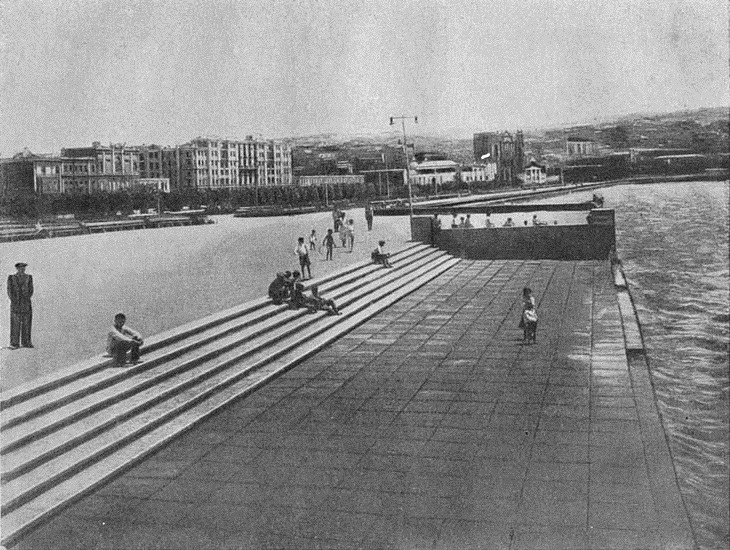This weekend residents in Baku celebrated the 110th anniversary of an iconic landmark along the Caspian Sea. Residents of Azerbaijan’s historic yet ultra-modern city take pride in their seaside boulevard, which is lined with a walking and bike path, park benches, greenery and a terrific atmosphere for an evening stroll – amongst plenty of other attractions to keep locals and visitors entertained all throughout the year.
The seaside boulevard is considered the top tourist spot in what is Azerbaijan’s capital because it is the heart and soul of a Caspian city. Iconic sites along its path include a giant ferris wheel, a yacht club, and “Mini Venice” – a small replica built during the Soviet era that was modernized in 2012 and expanded up to 10,000 square meters. The area is complete with crystal-clear canals and Italian-styled gondolas.
“After a tour on a gondola in Mini Venice, I felt like I hit two birds with one stone or I was in two cities with a single visit,” Turki, age 23 and from the United Arab Emirates, told Caspian News. “Despite being visited by many people at the same time, for me, Baku Boulevard seems to be a tranquil place where I can put my head at rest.”
Other attractions along the boulevard’s winding path include a carpet museum, celebrating weaving in the area that dates to the second millennium B.C.; a contemporary art museum; and the International Mugham Center, dedicated to the ancient style of Azerbaijani traditional music.
On April 7, 1909, the Baku City Duma permitted the construction of a seaside boulevard along the Caspian Sea shores in what is Azerbaijan’s largest city. Making it happen was much easier said than done, especially during autocratic Tsarist rule by imperial Russia: officials deliberated for years about the boulevard’s development before ground was broken for the project to begin.

Although the city administration deliberated about the issue several times since the beginning of the nineteenth century, there was not a decision to realize the project. Mammad Hasan Hajinski, the head of the architecture department of the city administration, was key to making a breakthrough and getting approval. He gave a fiery speech that stressed the need to create space within the city where residents could spend their leisure time. Hajinski also addressed the fiscal benefits of creating an open space for the public, offering to set up flower and water booths along the pathway that would promise between 4,000-6,000 rubles per month to the city’s budget.
Today, the boulevard is considered the second largest of its kind in Europe after the boulevard located along the Seine River in Paris.







 The Mine Action Agency of Azerbaijan (ANAMA) reported on Thursday the discovery of a significant amount of explosives in the Khojavand district of ...
The Mine Action Agency of Azerbaijan (ANAMA) reported on Thursday the discovery of a significant amount of explosives in the Khojavand district of ...
 Iran’s Foreign Minister, Hossein Amir-Abdollahian, has labeled a foiled Israeli drone attack in certain parts of the country as a "failure" for Isr...
Iran’s Foreign Minister, Hossein Amir-Abdollahian, has labeled a foiled Israeli drone attack in certain parts of the country as a "failure" for Isr...
 Iran has refuted reports of alleged damage to Shimon Peres Negev Nuclear Research Centre located southeast of Dimona, Israel, during the recent air...
Iran has refuted reports of alleged damage to Shimon Peres Negev Nuclear Research Centre located southeast of Dimona, Israel, during the recent air...



